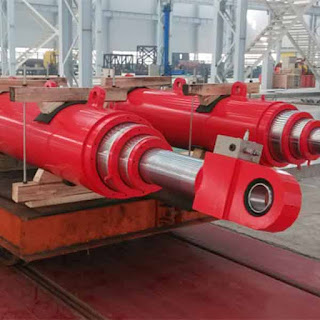What is 42CrMo4 cylinder rod

Hydraulic cylinders work by using hydraulic fluid (usually oil) to create pressure. There is a cylinder rod which is connected to a piston. This moves back and forth inside a cylinder barrel . One end of the barrel is capped (closed). The other end of the barrel has the cylinder head or gland. The piston rod will come out of the cylinder through here. The piston rod material 42CrMo4 cylinder rod with the material number 1.7225 is suitable for high-dynamic applications. Due to the material's high stability very high forces can be transmitted, e.g. for small connecting threads with large piston rods. Hard chrome plating means that an especially thick chrome layer is applied after the pre-honing and before finishing the honing process. The layer thickness depends on the rod diameter and has a hardness of more than 800 HV. Hard chrome plated piston rods can be used between -15°C and 200°C.
